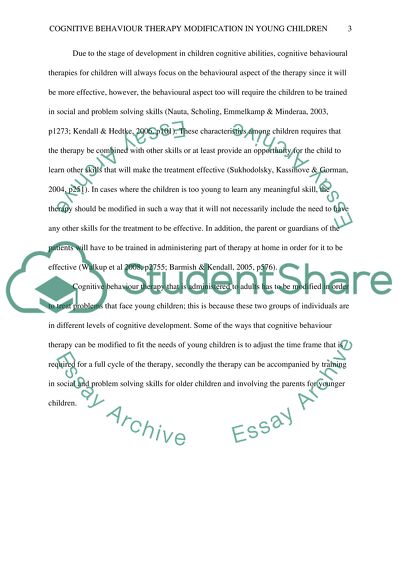Retrieved from https://studentshare.org/miscellaneous/1625730-how-can-cognitive-behaviour-therapy-cbt-be-modified-to-fit-the-needs-of-young-children
https://studentshare.org/miscellaneous/1625730-how-can-cognitive-behaviour-therapy-cbt-be-modified-to-fit-the-needs-of-young-children.


